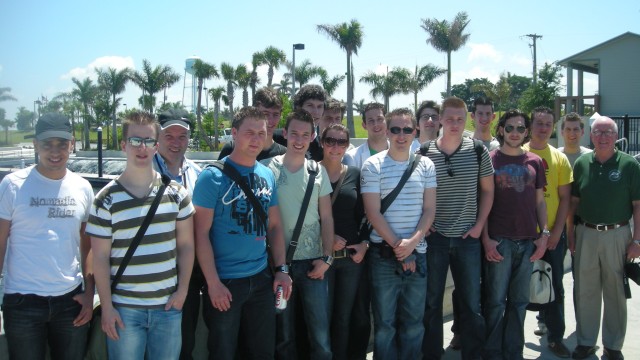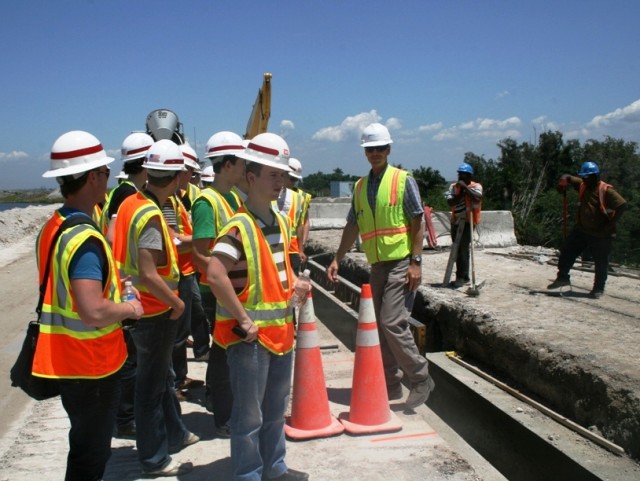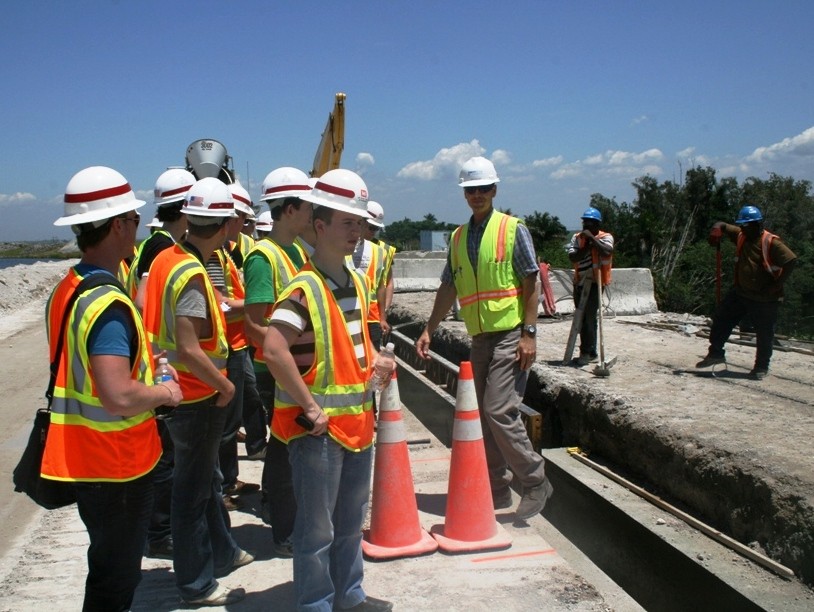After overcoming nearly impossible conditions, 20 students and faculty from the Netherlands toured the Herbert Hoover Dike and Everglades restoration projects the week of April 22, hosted by the Jacksonville District Corps of Engineers. The students are from the Zuyd University, one of the largest universities of applied sciences in Holland. They are senior civil engineering students who planned a trip to learn about construction projects that benefit or relate to the Everglades. However, the trip almost did not take place.
Just days before they were scheduled to fly to Miami, Florida, the now-famous volcano in Iceland erupted. However, the students persisted and were able to re-book a plane to the United States five days later than their original departure date. They had to reschedule most of their tours.
"The students improvised, adapted and overcame to arrive in south Florida on April 21," said Ted Roberts, Glades community liaison for the U.S. Army Corps of Engineers.
Their first tour was of the Herbert Hoover Dike Rehabilitation Project on April 22. They arrived at the Lake Okeechobee Outpost marina on a warm sunny day, after having just landed in Miami, Florida, the previous evening. "Many had gone for 24 hours without sleep," Roberts said, but added "you would never know it from their enthusiasm that day."
The tour included a presentation of the Herbert Hoover Dike Rehabilitation Project and Comprehensive Everglades Restoration Plan (CERP) at the marina, followed by a two-hour site visit of the dike project. Treviicos South Inc., which is conducting one section of the rehabilitation, provided the tour. "Treviicos went the extra measure and actually lifted the very specialized drill to allow them closer access to this remarkable feat of technology," Roberts said.
The dike construction tour was conducted by Ingrid Bon, Corps project manager forward; Jesse Pullen, Corps project engineer; and Jeff Taylor, Treviicos project manager. A student later wrote that the tour showed them construction methods they had never seen before.
Stan Bronson, executive director of the Florida Earth Foundation, then gave the international students a tour of Stormwater Treatment Area 1-East. This is one of five filtering marshes to protect the Everglades operated by the South Florida Water Management District, located in West Palm Beach, Florida. "The students were amazed at the number of alligators and wading birds they saw," Bronson said. The tour included a visit to the District's S-319 pump station. Bronson's foundation has organized a number of trips to Holland for Florida and Dutch water managers to exchange information, and also has close affiliations with Dutch schools.
Following their visit to Lake Okeechobee, the students and two faculty members spent the remainder of the week-long trip seeing other civil engineering sites in central and south Florida. On April 27, they participated in a driving tour of the Tamiami Trail Modifications Project, conducted by John Jettinghoff, resident engineer for the Corps of Engineers Miami office.
Later, tour organizer and student Jim Ingenhut said they could see how everything was interconnected at the end of the week. "Everything worked together for the same purpose," he said. "On almost every other project we visited, there was someone who could tell us more about the Everglades restoration, and riding the airboat, we could see with our own eyes how beautiful the area is you're trying to restore," Ingenhut said. It is also nice to know "that we're experiencing some of the same difficulties in the Netherlands. We're trying to let some of our rivers flow back to their natural course, to improve some environmental aspects. We might learn something from the success stories going on in (Florida)," he added.
Despite a rough start, the university students persisted and returned to Holland with many memories and a better understanding of water management and environmental restoration projects in Florida to apply to future careers.






Social Sharing